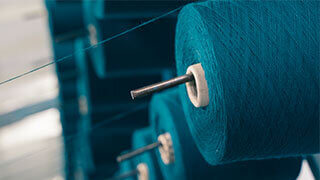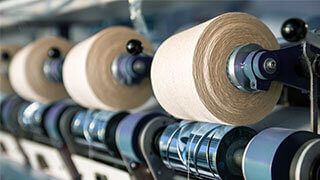Yarn Spinning: Batt Formation & Fiber Carding
Batt Formation
After opening and cleaning, the fiber is transported to the carding line. Before the fiber gets to the carding machine, it must be prepared for that process by going through batt formation.
The batt former is more commonly known as a chute feed. The chute feed further opens the fiber tufts and forms a continuous matt-like (batt) structure. This operation ensures that the carding process will receive a consistent weight of material in order that the output of the card will be as consistent and level as possible.
Carding
Many have called carding the foundation process of yarn manufacturing. This is partly due to the fact that it is at the carding stage that the previously loose, unoriented cotton fiber first takes on a textile form sliver. The card is made up of a series of cylinders, which are wire-wound. This wire has tiny teeth cut into it and each tooth serves to transport a small number of fibers through the machine. There are also wire-covered surfaces called flats that come in close proximity to the main cylinder. This is the area where most of the carding action takes place. The wire-wound cylinders acting against one another, in conjunction with the flats, are the actions that accomplish carding’s main purpose to straighten, align, and parallel the fiber.


